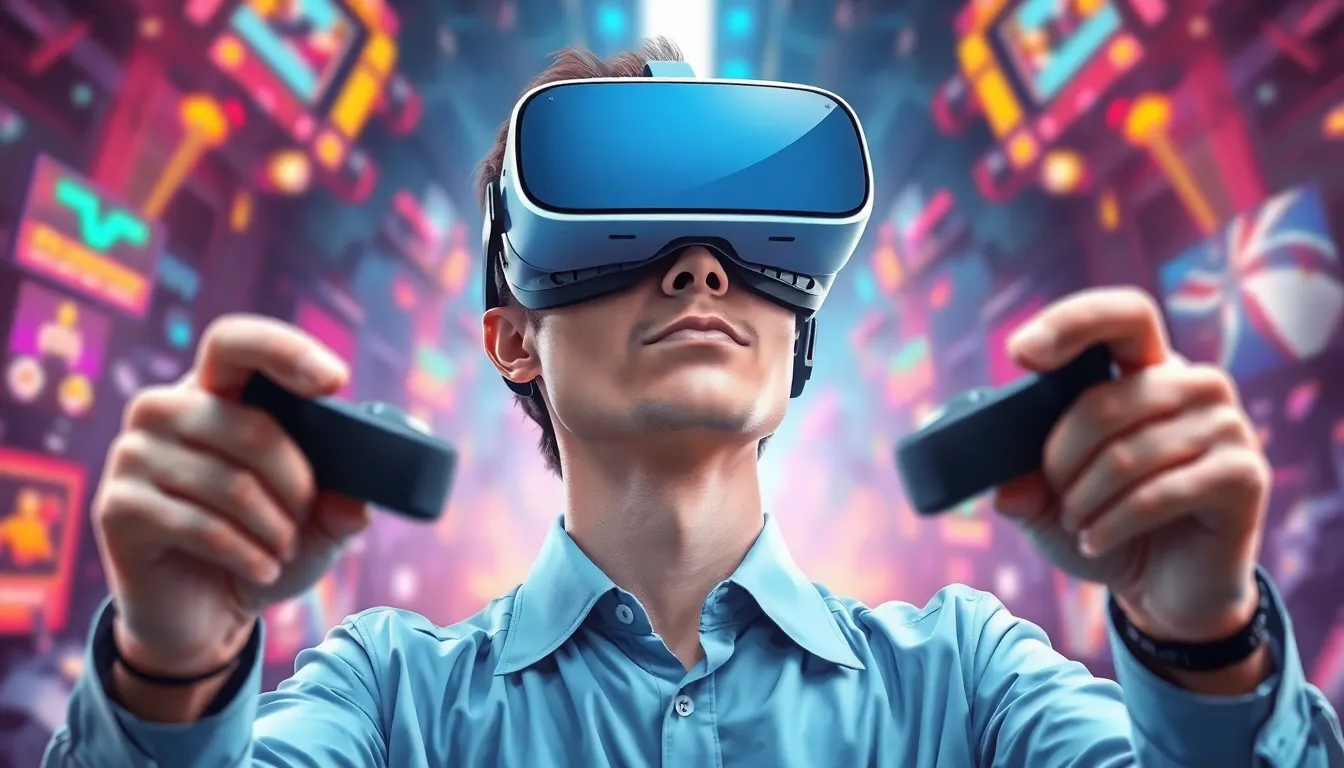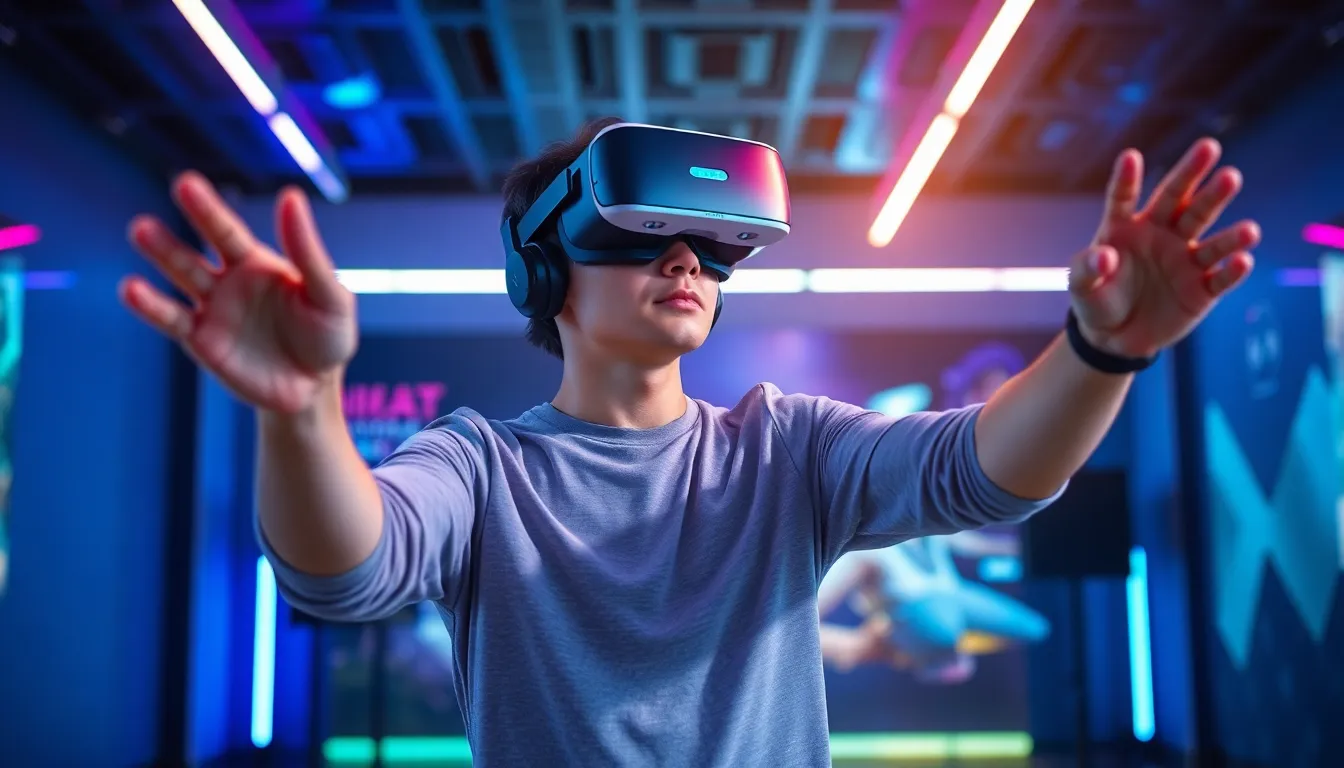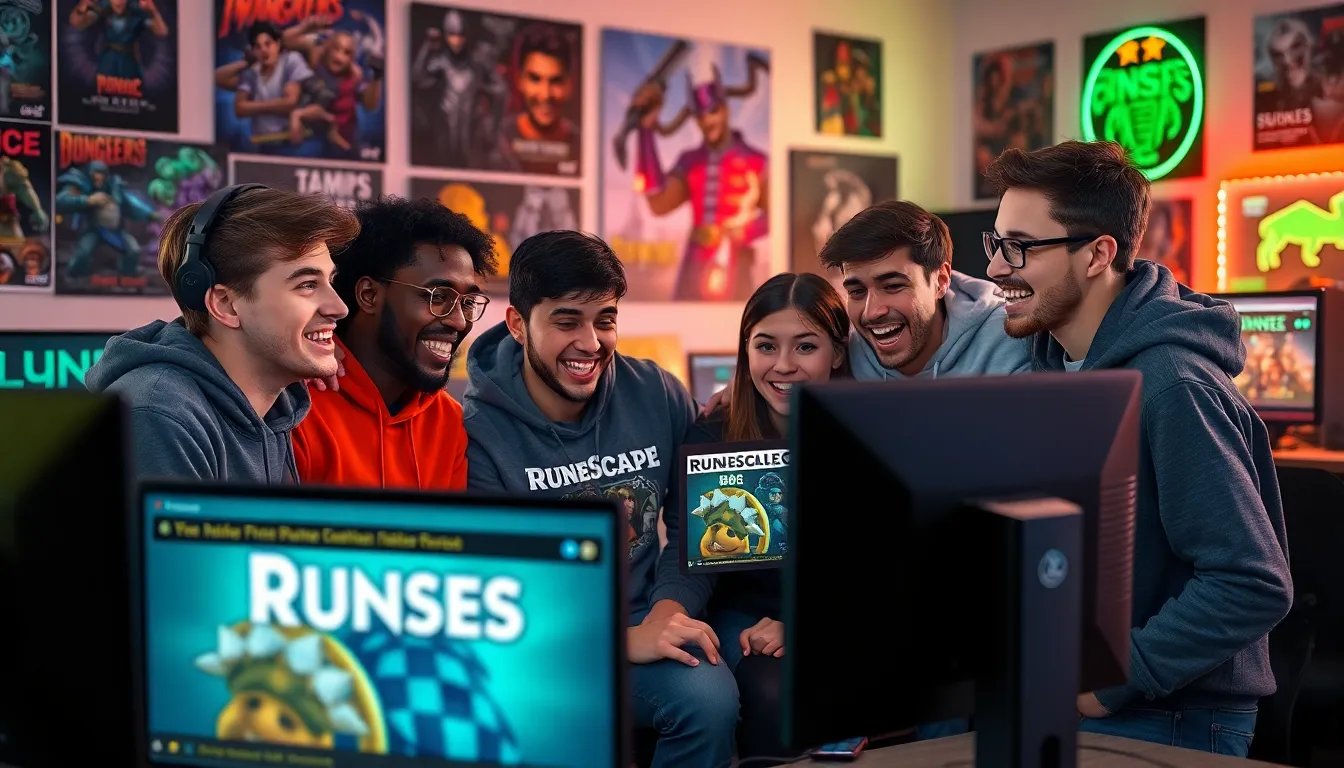Virtual reality gaming isn’t just a passing fad; it’s the future of entertainment, and it’s here to stay. Imagine slipping on a headset and stepping into a world where you can slay dragons, explore alien planets, or even dance with virtual celebrities—all from the comfort of your living room. As technology evolves, so do the trends shaping this immersive experience, making it more exciting than ever.
Table of Contents
ToggleOverview of VR Gaming Trends
Immersive experiences dominate VR gaming trends in 2023. The popularity of standalone VR headsets like Meta Quest 2 continues to rise, allowing players to engage without the need for external hardware. Developers focus on creating rich narratives and interactive environments that captivate users and enhance engagement.
Cross-platform compatibility emerges as a significant trend. Gamers appreciate the ability to connect across different systems, fostering community and accessibility. Moreover, social VR experiences such as VRChat are expanding, enabling users to interact in shared virtual spaces.
Realistic graphics advance with technologies such as ray tracing, improving visual fidelity and providing lifelike environments. Players report higher satisfaction levels when visuals captivate the senses.
Increased emphasis on fitness also shapes VR gaming. Titles like Beat Saber and Oculus Fit promote physical activity while delivering fun, contributing to the growing interest in VR as a fitness tool.
Annual industry reports reveal a surge in VR content development, with over 1,500 titles launched in 2023 alone. This growth signifies a robust market that supports diverse gaming preferences.
Innovative themes like horror and educational simulations attract varied audiences. Companies harness VR capabilities to create unforgettable experiences that resonate with gamers.
The continued integration of artificial intelligence into VR gaming refines interactions and customizes player experiences. This feature enhances realism, offering players unique adventures tailored to their preferences.
As the industry progresses, investment in VR technology escalates, fueling further advancements and trends. Companies recognize the potential for growth and are committed to exploring this evolving landscape.
Emerging Technologies in VR Gaming

Emerging technologies are shaping the future of VR gaming, pushing the boundaries of user experiences.
Advancements in Hardware
Standalone headsets see significant improvements, enhancing mobility and convenience for gamers. Innovations include lighter designs and improved battery life, making longer sessions enjoyable. Higher-resolution displays provide clearer visuals, reducing motion sickness. Enhanced tracking systems, with inside-out tracking capabilities, eliminate the need for external sensors. New controllers offer haptic feedback, enriching the tactile experience and immersing players further into virtual worlds. Furthermore, the introduction of eye-tracking technology allows for more intuitive interactions and personalized experiences.
Software Innovations
Developers create cutting-edge software that enhances gameplay and user engagement. AI integration enables dynamic environmental interactions, elevating immersion levels. Rich narratives and player-driven choices create deeper emotional connections with games. Additionally, social features foster connections among players, with VR enabling shared experiences even across distances. Streaming technology supports seamless integration of VR streaming into the gaming community, allowing for more engaging content creation. Game engines evolve to support realistic physics and advanced graphics, enhancing overall visual fidelity. These software innovations revolutionize how players engage and interact in virtual spaces.
Popular Genres in VR Gaming
Virtual reality gaming showcases a variety of popular genres, appealing to diverse player interests and enhancing immersive experiences. Two key genres are action and adventure, along with puzzle and strategy, both of which engage players in unique ways.
Action and Adventure VR Games
Action and adventure VR games engage players with thrilling narratives and fast-paced gameplay. Titles like “Half-Life: Alyx” immerse users in expansive environments teeming with enemies and challenges. Adventure experiences often involve exploration, discovery, and combat scenarios that heighten adrenaline levels. Players tackle quests that demand quick reflexes and decision-making skills. Interaction with the environment intensifies the experience, creating a sense of presence and urgency. Popular franchises consistently push the boundaries, offering rich storylines coupled with stunning graphics, attracting a dedicated following.
Puzzle and Strategy VR Games
Puzzle and strategy VR games stimulate cognitive skills while providing engaging gameplay. Titles like “The Room VR: A Dark Matter” challenge players with intricate puzzles that require critical thinking and problem-solving. Immersive environments draw players into complex scenarios where they solve various challenges using logic and creativity. Strategies often involve planning moves and executing tactics in real-time. Gamers frequently enjoy slower-paced gameplay that emphasizes mental engagement over physical action, appealing to those who prefer methodical exploration and strategizing in immersive settings. Each game invites players to think critically and adapt to evolving challenges within the virtual world.
Social Interaction in VR Gaming
Social interaction plays a vital role in VR gaming, enhancing the experience through connection and engagement. Players now seek shared moments and collaborative adventures within virtual worlds.
Multiplayer Experiences
Multiplayer experiences redefine gaming by allowing individuals to collaborate or compete in real time. Titles like “Rec Room” and “Phasmophobia” invite players to work together, building teams and forging friendships. Unique challenges inspire cooperation, making gameplay more enjoyable. Gamers can connect with friends or meet new people, forming communities around shared interests. Currently, over 60% of VR players engage in multiplayer formats, highlighting the trend towards social gaming experiences.
Virtual Events and Communities
Virtual events and communities are transforming social interaction within gaming. Platforms such as VRChat host concerts, art exhibitions, and social gatherings, creating immersive spaces for players. Individuals participate in themed events, leading to shared experiences that enhance community bonds. In 2023, the number of virtual events increased by 150%, reflecting a growing interest in online social gatherings. Engaging in these events allows players to connect and collaborate in ways traditional gaming cannot match.
The Future of VR Gaming
Emerging innovations in VR gaming are significantly transforming user experiences. Enhanced standalone headsets increasingly prioritize mobility, featuring lighter designs and longer battery life. With higher-resolution displays, these devices also reduce the occurrence of motion sickness, making gaming more enjoyable.
New tracking systems and controllers feature haptic feedback, heightening the tactile sensations players experience. Eye-tracking technology introduces intuitive interactions, allowing for seamless in-game maneuvering. AI integration facilitates dynamic environmental changes, making games more responsive and immersive.
Rich narratives and player-driven choices forge deeper emotional connections. Players find themselves more invested in the storytelling elements, creating a compelling gaming atmosphere. Social features are becoming increasingly essential, driving connections within the gaming community.
Multiplayer formats underscore the shift toward collective gaming experiences. Titles like “Rec Room” and “Phasmophobia” enhance gameplay by encouraging teamwork and the creation of friendships. Current statistics indicate over 60% of VR players participate in multiplayer formats, illustrating the popularity of these interactive experiences.
Virtual events redefine social interaction, with platforms like VRChat hosting concerts and gatherings. In 2023, the number of virtual events surged by 150%, showcasing a robust demand for online social activities. Framing gaming as a communal experience, these events foster connections unavailable in traditional settings.
Genres such as action, adventure, and puzzle continue to captivate audiences. With titles like “Half-Life: Alyx” and “The Room VR: A Dark Matter,” developers cater to diverse player interests. Enhanced immersive experiences stimulate critical thinking and collaboration among players, ensuring that the future of VR gaming remains vibrant and engaging.
The landscape of VR gaming is evolving rapidly and its future looks promising. With advancements in technology and a focus on immersive experiences players are bound to enjoy richer narratives and more interactive environments. The rise of standalone headsets and cross-platform compatibility is making VR gaming more accessible than ever.
As developers continue to push the boundaries of creativity and innovation the industry is set to attract a diverse audience. The integration of AI and enhanced graphics will further elevate user experiences. With the increasing popularity of social VR and multiplayer formats the community aspect of gaming is thriving.
The ongoing investment in VR technology signals a bright future for this medium, ensuring that virtual reality will remain a significant player in the entertainment landscape.








